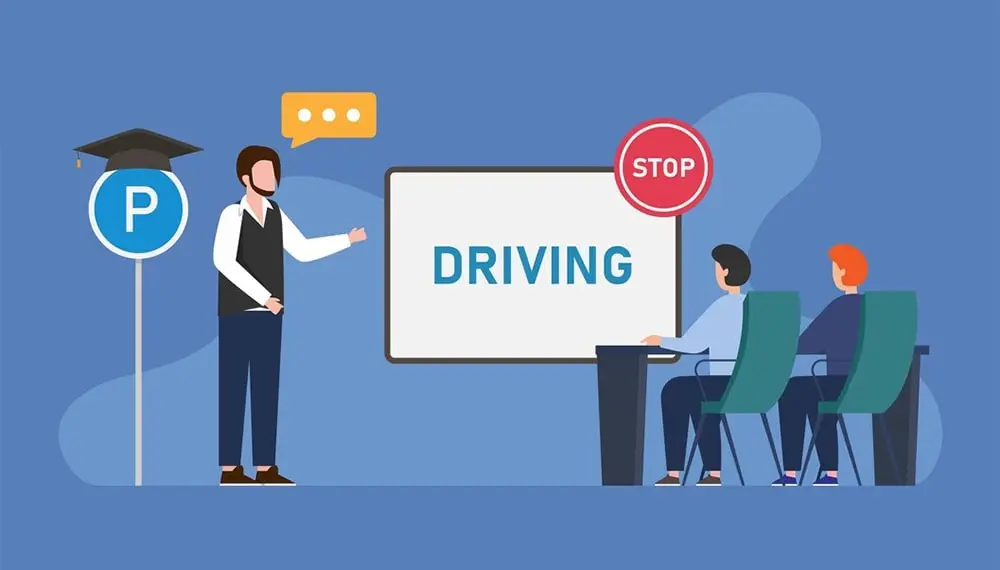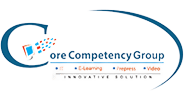Developing an Effective Employee Training Plan
Rohit Kumar
17 May, 2023

Benjamin Franklin once stated, "By failing to prepare, you are preparing to fail." This concept also applies to employee training; if conducted spontaneously, it will likely be ineffective and not contribute value to your organization.
Developing a well-thought-out training plan is the foundation for a successful training initiative and helps bring your company closer to achieving its goals.
This article offers a step-by-step guide to creating an excellent training plan and provides a ready-to-use template to initiate the training process effectively. We will cover the following:
- What is an employee training plan?
- What components should an employee training plan contain?
- Steps to create an employee training plan
- FAQ
- Conclusion
Defining an Employee Training Plan
An employee training plan outlines the necessary steps, timeline, resources, responsible individuals, and curriculum for effective organizational staff training. It is a framework for a training program that documents its essential components and aims to standardize training to align it with anticipated business outcomes.
In essence, an employee training plan is a strategy that prepares you as an employer to invest effort into a training program. Developing a training plan involves collaboration between the HR department, a team of supervisors, and senior management, making it a critical document.
Critical Components of an Employee Training Plan
While the plan's contents are ultimately up to you, it should include these essential elements:
- A proposed schedule
- Objectives set for learners
- Tasks to be completed within a timeframe
- Responsible personnel (trainer, instructor, mentor, etc.)
- Methods or activities used during the training
However, there is no universal plan template that everyone must adhere to. Training plans can vary and may also encompass a curriculum, essential skills to develop, desired outcomes, evaluation methods, responsible team members, props, and resources, among other aspects.
In any case, the plan's contents still depend on the supervisor's discretion and require management approval.
Steps to Develop an Employee Training Plan
Before hastily making decisions about roles and timelines, consider the prerequisites for training and invest effort into thorough preparation. Here are the seven steps to creating an employee training plan, with half being theoretical. We recommend these preparation steps, as they form the foundation for any successful training initiative.
#1 Align with your business goals
When creating a new training plan, it's crucial to consider your company's objectives and the issues it seeks to address through training. These can include:
- Accelerating the onboarding process for improved employee productivity
- Addressing high turnover for enhanced reputation and cost reduction
- Boosting employee compliance for operational stability
You can expand this list, but the main goal is to ensure that your future training plan is purpose-driven and contributes to one of these objectives. It's helpful to articulate specific, measurable goals for the training, such as:
- Decrease customer service agents' time to productivity from 10 weeks to 6 weeks
- Lower the turnover rate to 10%
- Establish a completely safe work environment and avoid OSHA or similar regulatory fines during the next inspection
#2 Identify your target audience and their requirements
Training plans can be as diverse as the job positions within a company. Additionally, they may differ depending on an employee's stage in their career journey. For instance, new graduates entering your organization will have distinct learning needs compared to experienced professionals.
It's crucial to clearly understand who you will be training, their prior knowledge and background, their schedules, whether they work on-site or remotely, and, most importantly, what they need to learn to perform better. Conducting interviews with employees and managers about their training needs and desired improvements can significantly inform your plan.
Individual training plans can also be developed to create a personalized professional growth path, which should be discussed with the employee. Ideally, the final plan should meet managers' and employees' expectations while aligning with the broader goal in Step 1.
#3 Determine your training approach
Training plans will naturally differ based on the type of employee training being developed. However, companies typically implement at least three typical training approaches:
- Orientation: Company culture and history, mission and values, product offerings, code of conduct, etc.
- Safety and compliance: Fire safety, sanitation guidelines, cybersecurity, industry regulations, anti-money laundering, etc.
- Job-specific training: Product manufacturing, equipment maintenance, direct sales, supply chain management, etc.
Each approach has unique tasks and phases, but they can all be part of a more comprehensive onboarding program. For example, as employees progress within a company, there may be ongoing upskilling initiatives and leadership training targeting your talent pool.
The number of participants, frequency, duration, material complexity, and associated costs, such as trainer fees, will vary significantly in each case. Defining learning objectives for your employees is crucial, which leads to the next step.
#4 Establish well-defined learning objectives
Before implementing the plan, articulate your desired training outcomes. That will help maintain training focus, achieve consistency, and guide learners' efforts toward the expected performance.
Consider breaking the objectives into specific, measurable goals, with at least two for each training session or course. For example, orientation training objectives could be:
- Objective 1: Become familiar with the company culture
- Objective 2: Understand the company's primary products and their competitive edge
Announcing objectives in advance and guiding learners through them during training can help maintain focus and allow learners to progress through small milestones within the training program.
#5 Develop tasks for accomplishment
Once the objectives are set, divide them into practical steps employees must take to gain proficiency in a particular topic or develop a specific skill set. With increasing complexity levels, these training tasks will influence employee productivity over time.
Determine the actions, exercises, or experiences to help employees achieve the learning goals. And remember that a training plan should introduce new knowledge when employees are prepared for the next stage. Simultaneously, establish deadlines to monitor their progress and ensure they are staying on track.
#6 Select the ideal training format
Once you've determined the topic or skill to teach your learners, it's time to choose the most suitable delivery method. Numerous learning delivery methods are available, including instructor-led training, virtual classrooms, eLearning, mobile learning, and coaching.
You can opt for various training activities in different formats based on the training materials, available hardware/equipment, and suitable classroom space for in-person sessions.
When choosing the optimal delivery method for your training plan, consider the number of learners, training frequency, available space, and budget. More specialized training programs, like leadership development, often require a personalized, in-person approach and are frequently conducted through coaching sessions.
Online courses or training manuals may be more appropriate for large-scale orientation training. Online courses and quizzes can help cover essential topics and assess learners' retention of new information. Additionally, you can repurpose existing materials, memos, manuals, and slides into online courses using the right online training tools.
One such tool is Core Competency LMS, which allows users to plan, create, and distribute eLearning materials in various formats.
#7 Implement your plan
This stage involves implementing your training plan and experiencing its initial results. After receiving final approval from management, ensure that employees, mentors/trainers/instructors, team supervisors, and department heads have easy access to the training plans.
You can quickly onboard your employees with the help of a learning management system. This online platform enables learners to take courses and quizzes, access the corporate knowledge base, and enroll in specific training programs on any device.
Moreover, a system like Core Competency LMS allows employees to stay informed about all scheduled activities and receive notifications about upcoming deadlines, ensuring nothing important is missed.
As mentioned, an effective employee training plan delivers knowledge when employees need it. Core Competency LMS can automatically assign required courses to new hires or other employee groups and roll out training courses, videos, manuals, and other content in a specific sequence.
Subsequent materials will become available only after completing the previous ones and executing your training plan as intended. These and other valuable functionalities of Core Competency LMS can significantly enhance your L&D workflows and decrease the time and financial resources invested in training initiatives.
#8 Evaluate the success of your training plan
Using the objectives established in Step 3, assess your learners' progress. Did they complete all assigned tasks? How well did they perform in assessments, if any were included? Did they have sufficient time, or did it take them longer than a day, a week, or the entire probationary period to finish the training?
At this stage, gathering feedback from learners, fellow instructors, and mentors is crucial to refine the training plan. Depending on the training scenario, ask your learners what they gained, if they can distinguish between products A and B, or how they comprehend the company's mission, among other questions.
FAQ About Training Plans
Let's review what we've discussed regarding training plans and their execution.
What's the purpose of a training plan?
Essentially, a training plan outlines the upcoming training process for a specific role, ensuring consistency, standardization, and repeatability within the organization.
What are the fundamental elements of a training plan?
A training plan's primary components include a schedule, responsible parties, learning objectives, training tasks, and educational resources.
How do you implement a training plan?
The most effective method for implementing an employee training plan is by using an LMS. A system like Core Competency LMS significantly automates training execution and monitors employee progress in any training program.
Conclusion
Developing a training plan for employees is simple enough. However, it does require thoughtful consideration and a balance between employees' needs, business objectives, and available resources. The rest comes down to technique or the appropriate online training technology.
Would you like to streamline training processes and guarantee a smooth launch of any training plan? Then you should start leveraging the industry-leading Core Competency LMS. Schedule your free demo today and see it in action.
You can contact them today for your online competency assessment needs. Get in touch:
marketing@corecompetency.net | Core Competency Online assessment software Or Contact them: +91 8527885550




